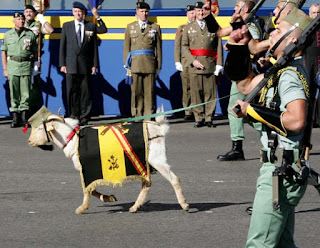Right in the middle of the perfect storm of cutbacks, not everyone is
tightening their belts. The Spanish Ministry of Defence ended 2012 with a
budget overspend of 28.65%. Spanish Prime Minister Rajoy's budget for last
year, his first, set Defence spending at just over €6.3bn. The Government took
great pains to point out that this meant a cutback of 8.8% on 2011. But this
was still much less than the 16.9% axe for the rest of the Ministries.
The biggest axe —of over 50%— was for the Ministry of Foreign Affairs,
particularly for the area of Foreign Aid. Curtailment —of over 30%— to Public Works & Infrastructure;
Industry, Energy & Tourism; Agriculture, Food & the Environment and
Education, Culture & Sport, was also traumatic. They are the most austere
budgets since the return of democracy, a very tough adjustment that implies
forgoing many investment programmes” said Finance Minister Cristóbal Montoro in
March 2012. But the fact has been quite different for military expenditure,
where austerity does not seem to exist.
The Defence appropriations had two extra items in 2012, adding up to
almost €2.54bn. The largest —over €1.78bn— went exclusively to covering what
has come to be known as the arms bubble, a series of contracts signed
with the Spanish weapons industry by the Aznar governments between 1996 and
2004, coming altogether to €30bn, to be paid until 2025.
They are officially known as Programas Especiales de Armamentos
(PEA: Special Programmes for Weapons) and are a complex financial web via which
the major Spanish defence contractors receive credit at zero interest to build
combat planes and helicopters, warships and submarines, tanks and missiles,
among others, and to which the executive is bound by contract to purchase. A
ruinous deal which the current crisis has condemned to failure, but which no
Spanish government has to date dared wind up. The bubble has become bigger and
bigger and will require about €1.2bn this year to comply with commitments.


















0 comentaris:
Publica un comentari a l'entrada